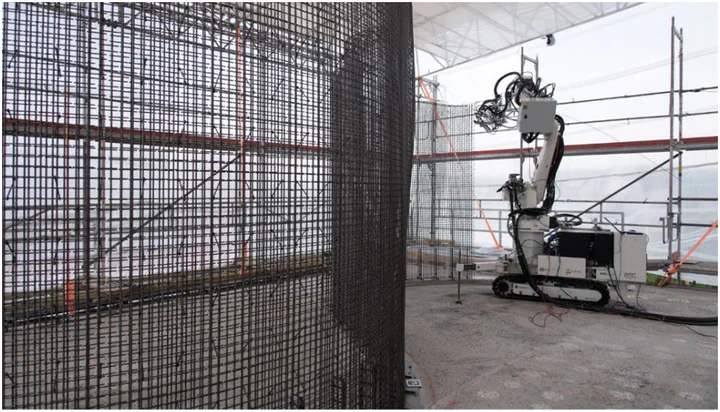Productivity of digital fabrication in construction: Cost and time analysis of a robotically built wall
Aug 1, 2018·, ,,,,·
0 min read
,,,,·
0 min read
Borja García De Soto
Isolda Agustí-Juan
Jens Hunhevicz
Samuel Joss
Konrad Graser
Guillaume Habert
Bryan Adey
 In situ Fabricator building the Mesh Mould Wall. © NCCR dfab
In situ Fabricator building the Mesh Mould Wall. © NCCR dfabAbstract
Although automation has been actively and successfully used in different industries since the 1970s, its application to the construction industry is still rare or not fully exploited. In order to help provide the construction industry with an additional incentive to adopt more automation, an investigation was undertaken to assess the effects of digital fabrication (dfab) on productivity by analyzing the cost and time required for the construction of a robotically-fabricated complex concrete wall onsite. After defining the different tasks for the conventional and robotically fabricated concrete wall, data was collected from different sources and used in a simulation to describe the distribution of time and cost for the different construction scenarios. In the example, it was found that productivity is higher when the robotic construction method is used for complex walls, indicating that it is possible to obtain significant economic benefit from the use of additive dfab to construct complex structures. Further research is required to assess the social impacts of using dfab.
Type
Publication
Automation in Construction